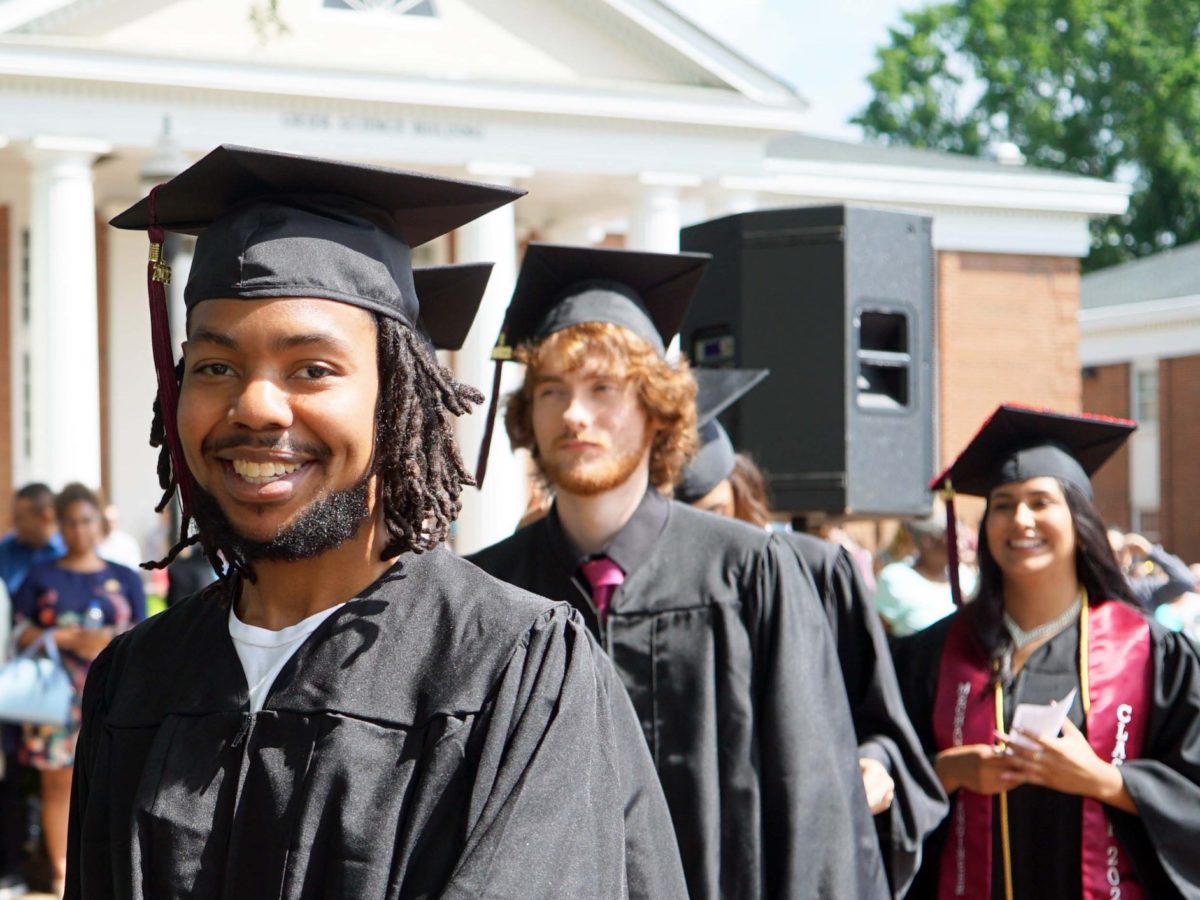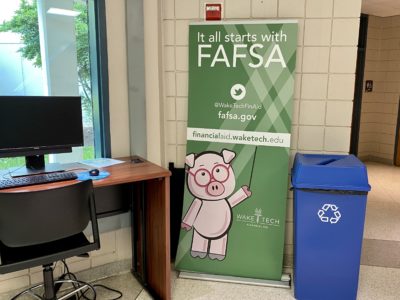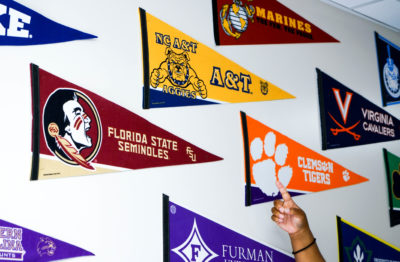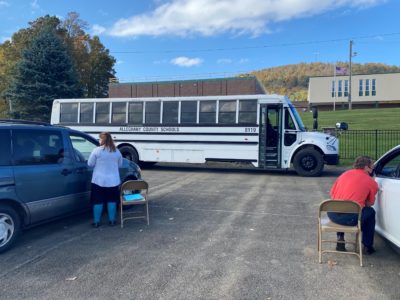
|
|
Updated Oct. 3, 2022, at 9:00 a.m. with information on the Longleaf Commitment Grant.
Last year, roughly 2.2 million high school students completed the Free Application for Federal Student Aid (FAFSA) — a required application to receive financial aid in college.
On Saturday, Oct. 1, the 2023-24 FAFSA cycle officially begins. The form is open until June 30, 2024 on a rolling basis. You should complete the form as soon as possible, as many N.C. schools award aid on a first-come, first-served basis.
Completing the FAFSA is free, but other challenges exist, particularly for first-generation prospective college students and students of color.
A third of high school seniors nationwide don’t submit the FAFSA, leaving an estimated $3.4 billion in aid on the table each year. Students who complete the FAFSA can seek more aid opportunities, and they’re also more likely to enroll in higher education, according to a 2020 report by Education Strategy Group (ESG). Among students who complete the FAFSA, 90% attend college directly after high school, compared to 55% of students who don’t complete the FAFSA.
“The education of students learning how to walk through and navigate those processes are critically important,” said Levy Brown, N.C. Community College System’s (NCCCS) senior vice president and chief academic officer, regarding FAFSA and financial aid.
“It’s important because helping students to understand those processes is another way of removing barriers to higher education and to community college,” he said. “We want to see students get into our open door and have the opportunity to complete and study with us, which will ultimately, as a graduate, lead to them going out into a great career opportunity.”
Filling out the FAFSA is important, but it can be confusing.
Below, we’ve compiled a list of frequently asked FAFSA questions. Though the questions are geared toward students, we hope this information will make the FAFSA process less daunting for students, educators, and family members alike.
How do I apply?
Create a FSA ID. This includes a username and password and allows you to access and sign the FAFSA electronically.
If you’re a dependent student, one of your parents whose information is reported on the FAFSA form will also need an FSA ID so that your parent can sign your application electronically. If your parent doesn’t have a Social Security number (SSN), your parent won’t be able to create an FSA ID (which requires an SSN). This means you’ll have to select the option to print a signature page when you get to the end of your FAFSA form on fafsa.gov.
Gather the documents needed to apply. The FAFSA questions ask for information about you (your name, date of birth, address, etc.) and your financial situation. The 2023–24 FAFSA on the Web Worksheet previews the questions students and parents may be asked while completing the FAFSA form. Here are some examples of the forms you might need:
- Your SSN
- Your parents’ SSN’s if you are a dependent student
- Your driver’s license number if you have one
- Your Alien Registration number if you are not a U.S. citizen
- Federal tax information, tax documents, or tax returns, including IRS W-2 information
The financial data determines a family’s expected out-of-pocket college payments. If those returns don’t reflect your current financial situation, you can file appeals for a professional judgment review with the school you plan to attend.
File your FAFSA form online at fafsa.gov, by completing a FAFSA PDF and mailing it, or by requesting a print-out of the FAFSA PDF at 1-800-433-3243 and mailing it. Check out this resource for information on what happens after you submit your FAFSA form.
Why should I complete it?
Completing a FAFSA makes you eligible for federal aid, such as Pell Grants, work-study programs, and previous Covid-19 relief. Many N.C. colleges and universities also use the form to divvy up state aid.
Eligible N.C. students can also apply for the Longleaf Commitment Grant — providing $700 to $2,800 per year, for a total of two years — just by filling out the FAFSA and enrolling in one of the state’s 58 community colleges. Gov. Roy Cooper launched the $31.5 million Longleaf Commitment in May 2021 to supplement the federal Pell grant. He expanded the grant to include 2022 high school graduates in November 2021. (You can learn more about the Longleaf grant here.)
Affordability is one of the main barriers to postsecondary attainment. The FAFSA helps many students access money for college they otherwise couldn’t. In North Carolina, 59.3% of seniors have completed the FAFSA for the 2022-23 cycle, as of Sept. 16, 2022.
Students of color are less likely to complete the FAFSA – 74% of African-American students and 66% of Hispanic students complete it, compared to 82% of white students.
First-generation prospective college students and their families also face barriers, said Amy Denton, a regional representative at College Foundation of North Carolina (CFNC).
“When they really have never been through this process,” Denton said, “It’s just a little scary.”
A lack of reliable internet access and language barriers can also be a challenge. Making FAFSA information accessible, providing bilingual resources, and hosting FAFSA events can help, she said. The foundation used to host an annual FAFSA day to inform communities about the process but recently shifted to promoting individual school events.
“We are very fortunate to have our community colleges be an advocate for that,” Denton said.
At the NCCCS, Brown said accessibility and financial aid information goes hand in hand with the system’s new 2022-26 strategic plan. The State Board of Community Colleges plans to approve that plan at its October meeting.
“This concept of financial aid and removing barriers and helping students and their guardians to understand how to navigate the process will have positive implications on enrollment holistically as well,” Brown said.
What if I miss the deadline or can’t complete the form?
Most individual colleges have their own scholarship and aid dashboards.
While many need-based funds require a FAFSA, some allow other documentation of your financial situation. Many scholarships don’t require any financial documentation.
If you’re not a U.S. citizen, you might not have a SSN. In this case, you can use your Alien Registration number to apply. Non-citizen students can also seek aid at individual colleges with funds that don’t require the FAFSA, like these resources at Durham Tech and Wake Tech.
You can learn more about other FAFSA barriers and what can be done to overcome them here.
Where can I find more resources?
“Always start first with your school counseling office,” Denton said.
Many of the state’s 58 community colleges also host FAFSA days, Brown said, and offer extended hours to help students complete the form.
Other resources include:
- CFNC’s FAFSA guide, including an interactive map to help students find local financial aid assistance, a form students can fill out to receive personalized FAFSA assistance, and videos on how to fill out the application. CFNC also has some Spanish-translated information.
- LatinxEd provides “targeted, multi-year support to Latinx students and immigrant families striving for higher education and greater opportunity.” One of the group’s initiatives is College y Consejos, which is a free online college advising space for Latinx students.
- The NCCCS Scholarship Guide and the system’s Find Help program.
Do you have more questions? Email me at hmcclellan@ednc.org.
Behind the Story
Portions of the resources and data sections of this article were originally reported by Anna Pogarcic and Analisa Sorrells in their articles, “The 2022-23 FAFSA is open. Here’s what you need to know,” and “The 2021-22 FAFSA opens today. Here’s what’s different this year,” respectively.
Recommended reading




